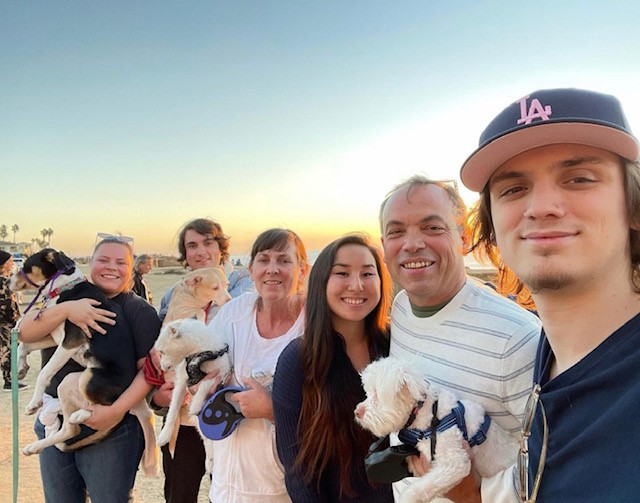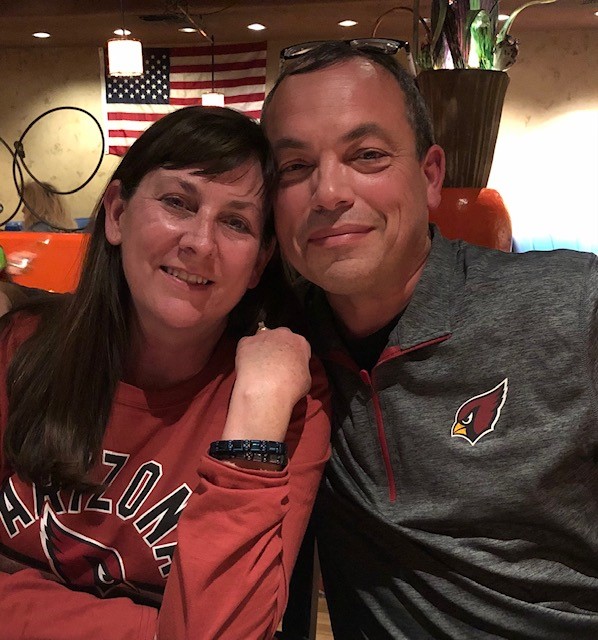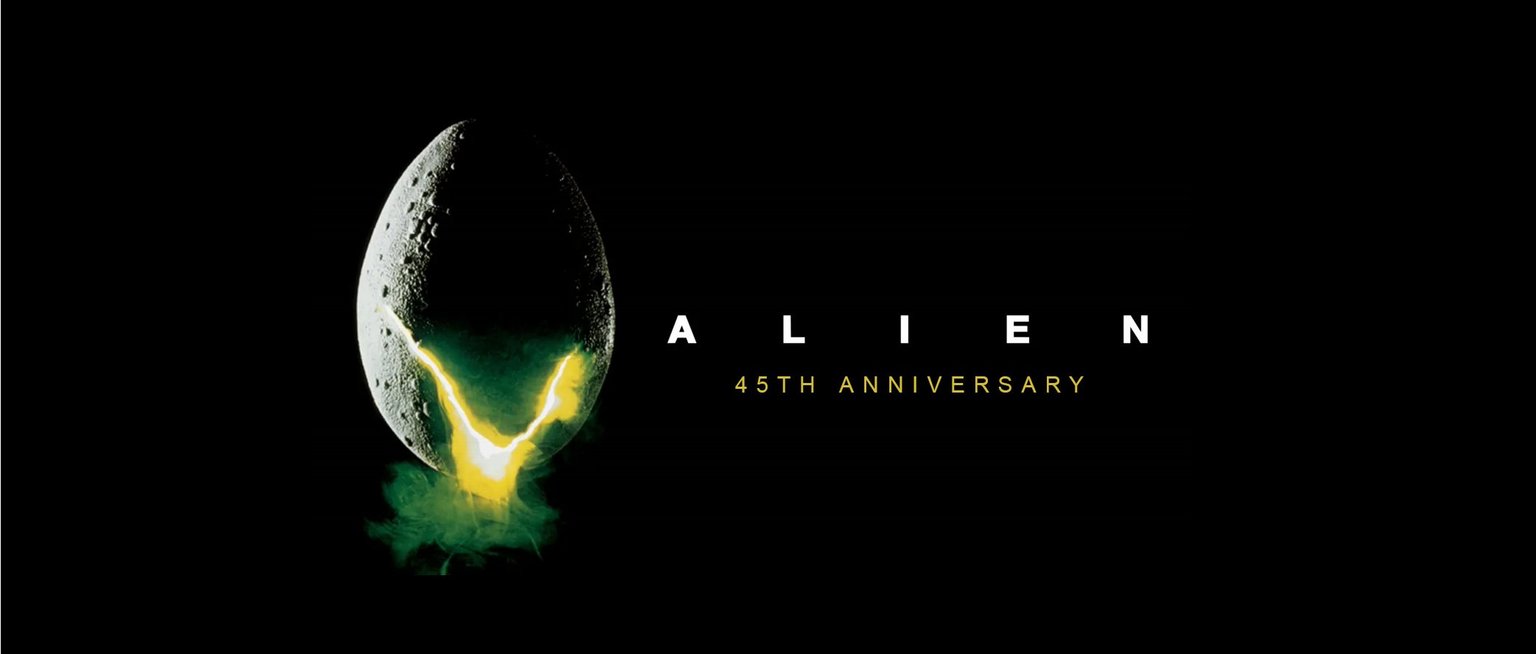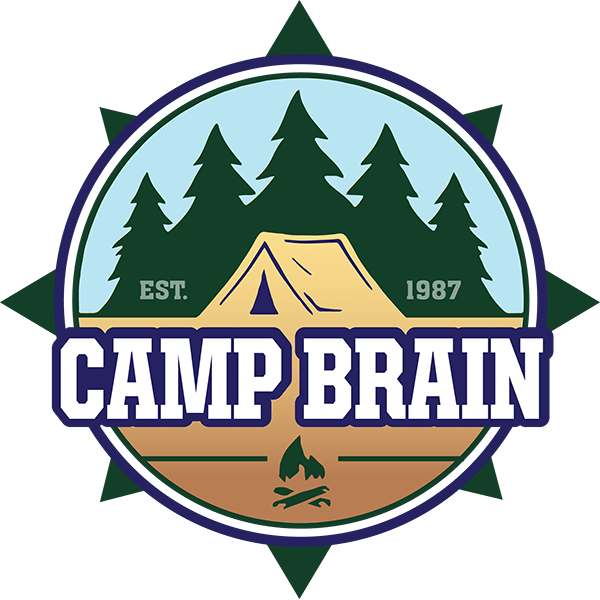Lessons Learned From the Edge of Life: Part 1
This is the first in a three-part series about Bob Millsap’s personal experience surviving COVID-19, beating the odds, and his ongoing road to recovery. Tune in next week for Part 2.
I can’t quite figure out what just happened, but I am getting there.
I nearly died from coronavirus pneumonia.
My wife, our two sons, their girlfriends, and I all met in San Diego for a fantastic Thanksgiving weekend. While there, all six of us got sick, but only my wife Shelly and I had symptoms that eventually turned severe. It began as the sniffles. Shelly thought that it may have been a reaction to mold, as the bathroom seemed to have some mold in it.
I told myself that I had a lot to live for and that my fight could be a positive example for other people facing a similar fight. From that point forward, my focus was to be patient and to preach positivity. I knew there would be people helped and inspired, as well as it being my motivator for moving forward with purpose.
Lessons Learned From the Edge of Life: Part 1
This is the first in a three-part series about Bob Millsap’s personal experience surviving COVID-19, beating the odds, and his ongoing road to recovery.
Tune in next week for Part 2.
I can’t quite figure out what just happened, but I am getting there.
I nearly died from coronavirus pneumonia.
My wife, our two sons, their girlfriends, and I all met in San Diego for a fantastic Thanksgiving weekend. While there, all six of us got sick, but only my wife Shelly and I had symptoms that eventually turned severe. It began as the sniffles. Shelly thought that it may have been a reaction to mold, as the bathroom seemed to have some mold in it.
I told myself that I had a lot to live for and that my fight could be a positive example for other people facing a similar fight. From that point forward, my focus was to be patient and to preach positivity. I knew there would be people helped and inspired, as well as it being my motivator for moving forward with purpose.
On Sunday while driving home, Shelly and I both started feeling horrible. We stopped to eat in Yuma. I could barely eat. But I’m tough. I didn’t worry about it, as I thought I’d be alright. But as the week progressed, my symptoms also progressed.
By Thursday I had the worst case of diarrhea I ever had. I struggled to drive to a coronavirus test sight. I pulled up at 10:57 a.m. They told me they closed at 11:00 a.m. and to hurry as they handed me a cup with a straw in it. They told me to spit in the straw. Simple instructions I thought. But when I went to spit, I had none.
For the next five minutes, I scrapped together all the saliva I possibly could.
A gentleman then said, “We’re closing now, please give me your cup.” Saliva barely registered on the bottom of it.
“This tiny amount may be enough, we’ll see. You’ll get results texted to you tonight.”
A text came through twelve hours later. I tested positive.
I barely slept as multiple times an hour, I was hurrying to the bathroom. It was the worst flu-like symptoms I could ever remember.
But the next morning as I got up from bed, I struggled to catch my breath. “This is odd,” I thought. But I honestly didn’t put much more thought into it. I had work to do, and I needed to get to it.
It just so happened I got a text from someone I worked with—Dom, my branch manager, who had also become a friend. The text wasn’t work related; it was a continuation of our discussion of our favorite TV show, Curb Your Enthusiasm. I mentioned to Dom that I had just tested positive for COVID. He had just recovered from the virus and had experienced some complications with it.
“How’s your breathing?”
“I’m actually struggling to breathe,” I responded.
“What’s your oxygen level?” he asked.
“I have no idea what that even means,” I responded.
He said he’d get an oxygen pulse meter to my house quickly. Within 15 minutes, one was dropped at my door by Lyndi, a teammate who lived a couple miles from me.
Shelly grabbed it from the doormat and we promptly figured out how to operate it. The result was a 93 pulse rate and a 73% oxygen level.


I still didn’t understand the magnitude of what a 73% oxygen level meant. Besides, I still had some work to finish. It was the final day of open enrollment for an employment benefit I wanted to take part in. The email instructions were vague, so I called the support line of the financial services company that was handling the benefit.
I struggled to talk through grasping for breaths while completing the open enrollment on the phone with a nice, patient lady in Florida. It took us at least 30 minutes to get all set up. When finished, I laughed and told the lady I was now heading to the hospital.
I had no clue of the seriousness or urgency to the situation. But by this point I was struggling enough that I allowed Shelly to drive, which was very rare.
We stopped at the urgent care near our house. I went inside and fought to get the words out that I was struggling to breathe. The lady at the counter immediately said, “We can’t help, but get to the hospital NOW!”
Getting back to the car, Shelly made a split-second decision and started driving to a nearby small hospital with an emergency room. This facility had opened in our town within the last year. It was five miles away, which was the same approximate distance of two large hospitals in neighboring towns. We both had a gut feeling that this smaller facility would give me the quick attention that I needed. A decision as simple as this may have saved my life.
Entering the door, I was immediately greeted by a friendly lady who told me not to worry about talking. Within seconds, a nurse placed another oxygen meter on my finger. It also said 73.
“Come with us,” the nurse said.
“What about these people waiting?” I laughed.
“At a 73 oxygen, you get to the front of the line.”
Shelly hadn’t even parked the car yet, and I already had oxygen placed over my nose to help me breathe. From here, several nurses and a doctor kept rotating into my room, asking the same general questions about my health.
I asked the doctor what he thought about my situation.
He proceeded to tell me that I had pneumonia connected to the coronavirus. That I was fortunate to come in when I did, because without the aid of supplemental oxygen, it wouldn’t have taken me very long to suffocate to death. He described how the upcoming days would be crucial in determining my longer-term prognosis.
That’s when the seriousness of my situation started to become clear to me. Up until then, I thought that I would get treated with some medicine and be good to go home within a few hours.
I didn’t want to alarm Shelly or the rest of my family with the severity of my situation. These were strange times, as Shelly couldn’t be in the room with me due to coronavirus protocols. So the conversations with the doctor and nurses were just between me and them.
Shelly called me from the waiting room. I told her I would most likely be in overnight and asked her to go home and grab a few items for me. I kept thinking about my laptop, as I had work that needed to get done.
Shelly brought those items to me and then went home. I was worried about her, as she was also sick from the virus. But my biggest concern was the fact that she has a traumatic brain injury from a freak accident nine years ago, so I have been her caregiver ever since. There are many things she no longer can do on her own, so my mind was focused on getting well quickly so I could get back home and take care of her.
That evening, reality became clearer as I struggled with all of my might to breathe. That’s when I met Dr. Kelli.
Dr. Kelli was a personable, caring-type provider whom I hit it off with right away. She explained that I was very sick. That I needed more supplemental oxygen than most people she sees. Apparently, my Type II diabetes had added to my issues. She explained I needed to put my focus on following their instructions and fighting hard not to give up. She needed me to stay positive.
As I struggled with my breath, I managed to tell her a little about myself. I gave her a quick synopsis of what I had been through in my life. Losing my fiancé at a young age. Struggling for years and then falling in love and marrying a trusted and valued friend, which alienated people close to us. Climbing to the top of the grocery world, only to lose it all due to my hard ass ways. With that, millions of dollars were lost. Then rising up in the mortgage business, only to lose everything in the [financial] crash. I proceeded to explain that things got so bad, I secretly drove a cab overnight through the rough streets of Phoenix. This changed me into a more empathetic human. For work, we left Phoenix for Jackson Hole, Wyoming. The reinvented me became the popular local grocer and I created a radio show with my son. Then life came crashing down again with Shelly’s brain injury.
I told Dr. Kelli that I began writing about my journey and that it was helping me and others. My story is a story of resilience, and this is just another chapter in it. I explained that I would be positive, patient, and fearless, and that I would not allow any negativity to enter these four walls. Dr. Kelli beamed with a wide smile and said, “I love this! You do have the attitude needed to beat this.”
By overhearing conversations and watching expressions, it didn’t take long for me to understand that I was in a complete fight for my life. But I wouldn’t discuss that with anyone, as that was the negativity I was avoiding. Besides, I did not want Shelly or my sons Dylan and Taylor to worry more than they already were.
To keep from being put on a ventilator, I was put on the most high-powered high-flow oxygen machine at 60 liters per minute. I could not stand up, nor roll over without assistance. Every breath felt like I was digging deep to breathe after a mile sprint. Often times, I likened it to what drowning must feel like.
I could have easily gotten scared or negative. But what was I scared of? I had lived an amazing life full of enough ups and downs to cover several lifetimes. If my life was about to end, so be it. It had been a good life. My only concern was that I didn’t want to leave my family to deal with life without me. I also recognized that I had a lot more life to live with many people to help and more of a positive impact to be made. So, I told myself that I had a lot to live for and that my fight could be a positive example for other people facing a similar fight.
From that point forward, my focus was to be patient and to preach positivity. I knew there would be people helped and inspired, as well as it being my motivator for moving forward with purpose.
Bob Millsap is a writer, caregiver, and survivor of Long COVID. He and his wife Shelly live in Surprise, AZ and are the proud parents of two sons.
ABOUT BRAIN INJURY ALLIANCE OF ARIZONA
The Brain Injury Alliance of Arizona (BIAAZ) is the only statewide nonprofit organization dedicated to improving the lives of adults and children with all types of brain injuries through prevention, advocacy, awareness and education. BIAAZ also houses the Arizona Brain Health Resource Center, a collection of educational information and neuro-specific resources for brain injury survivors, caregivers, family members and professionals.
What began in 1983 as a grassroots effort has grown into a strong statewide presence, providing valuable life-long resources and community support for individuals with all types of brain trauma at no charge.
The Brain Injury Alliance of Arizona:
- Works with Congressional Brain Injury Task Force
- Houses Arizona Brain Health Resource Center
- Hosts Statewide Opioid Use Disorder & Cognitive Impairment Workgroup
- Has Statewide Opioid Use Disorder & Cognitive Impairment Response team with peer support, training, and family wraparound services
- Facilitates Brain Health Advisory Council
- Manages statewide Neuro Info-Line: 888-500-9165








